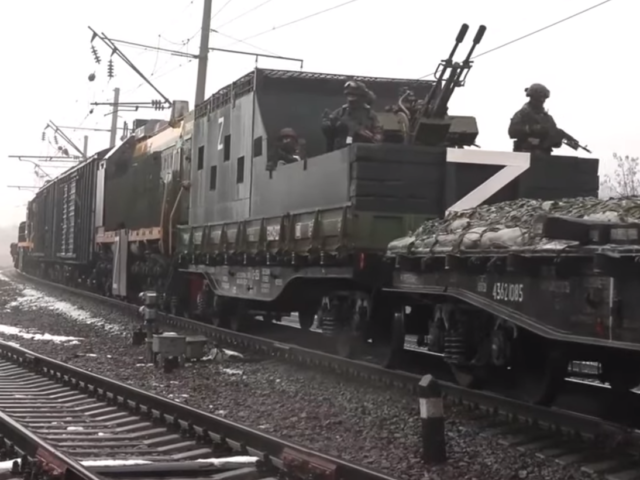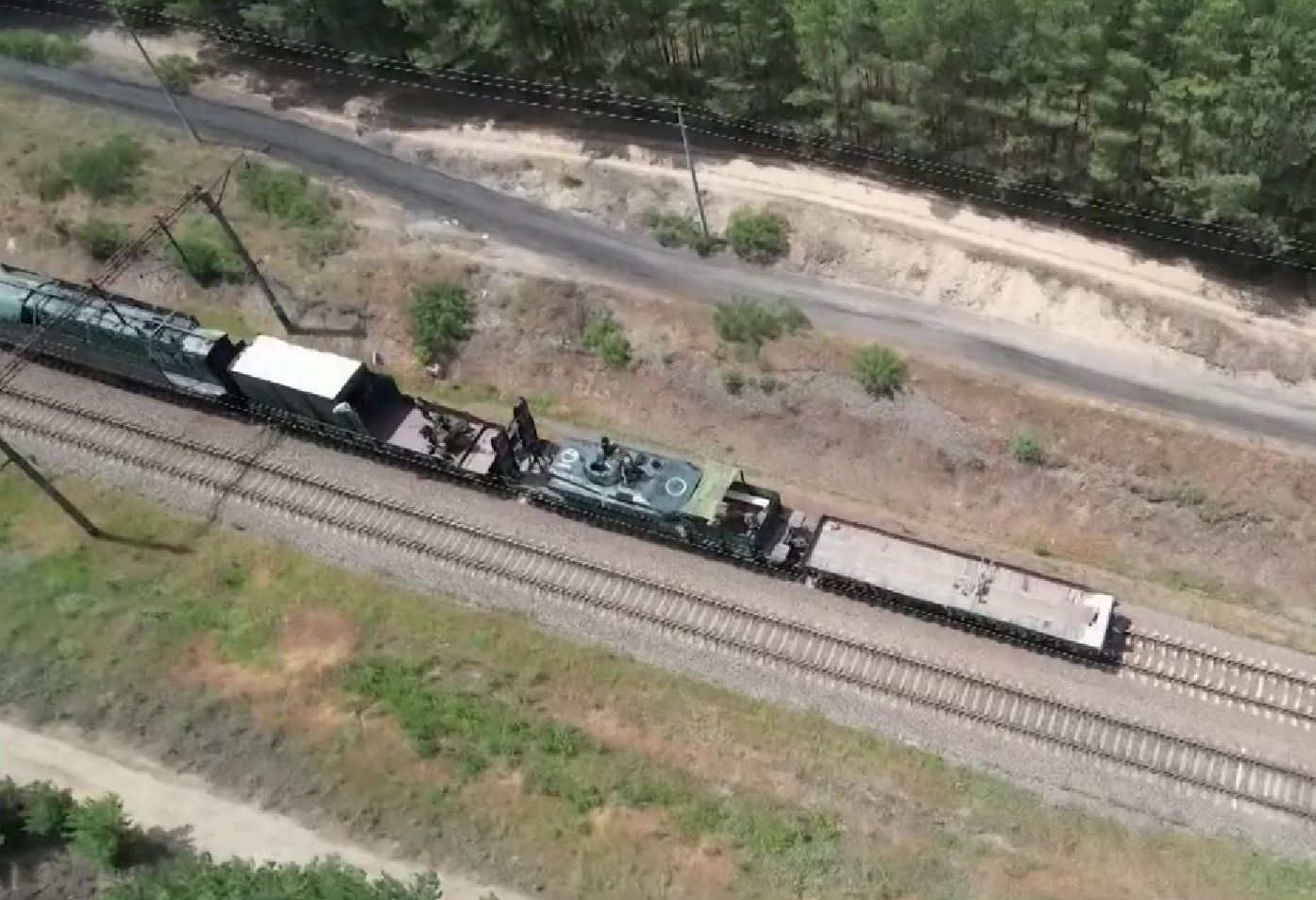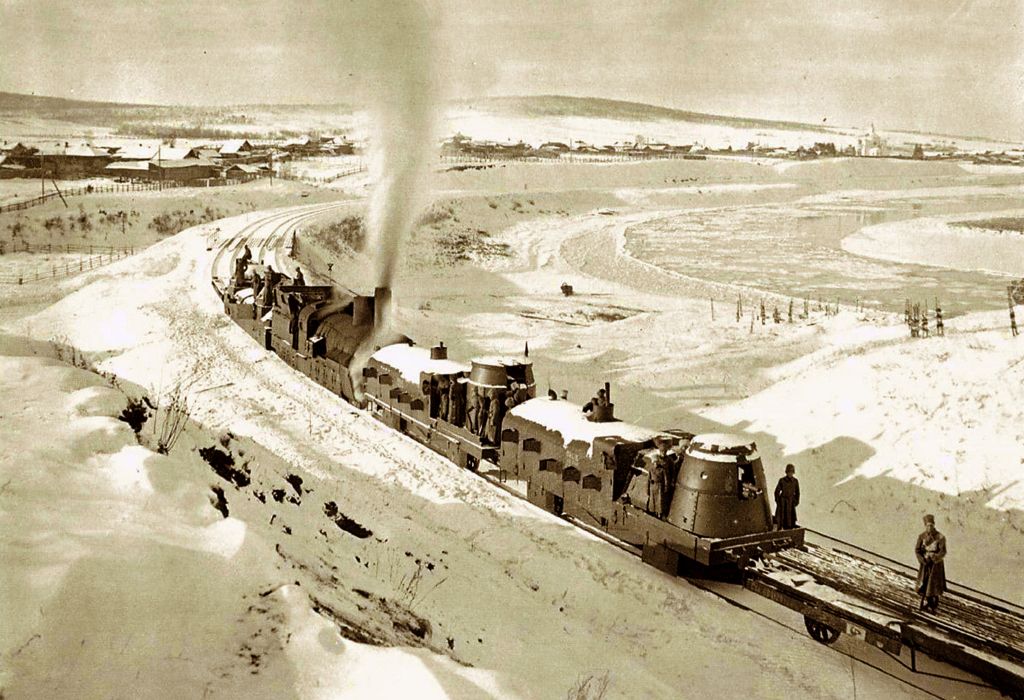Russia is attempting to claim a victory over Ukraine after it was embarrassed by a series of explosions destroying trains carrying supplies for their war machine in the past month, now claiming their fleet of armoured trains has “successfully repelled all the Ukrainian saboteurs’ attacks”.
A Russian freight train came off the rails and exploded in a ball of flame earlier this month, followed by another the following day. In both cases, an “explosive device” was involved, and the work of saboteurs was suggested. Given how crucial railways are to Russia’s war effort — moving troops, tanks, and supplies by train is essential as Russian roads are not up to the task — it is not surprising perhaps that the Kremlin has now hit back with a story claiming they are proactively preventing further such explosions.
Partisans? ‘Explosive Device’ Destroys Russian Fuel Train Near Ukraine Borderhttps://t.co/2oiw4x3I7J
— Breitbart London (@BreitbartLondon) May 1, 2023
Hailing the success of the ‘special trains’ — four armoured trains bristling with guns, grenade launchers, and specially trained rail-troop soldiers — the Kremlin said the units not only prevent attacks, but inflicted “heavy losses” on the enemy as well.
The remarks come from Railway Troop leader Lieutenant-General Oleg Kosenkov, who is claimed to have remarked by a Russian state media outlet that the trains: “the special trains successfully repelled all the attacks by subversive/reconnaissance groups of Ukrainian armed formations, inflicting heavy losses on the enemy… [while] conducting technical reconnaissance, demining railway tracks, restoring damaged sections, accompanying military cargo, building bridges, clearing debris and carrying out earthworks”.
Russia presented no evidence of these engagements with saboteurs, such as images or video footage of contact.
The bullish claims of not only preventing sabotage but also repairing damage when inflicted, as well as “heavy losses” of the enemy, appear to come as a rebuke of sorts against a recent communication of the British Ministry of Defence, stating that Russia would find it impossible to protect its strategically crucial rail network from sabotage. The analysis suggested: “A recent uptick in Russian rail accidents in areas bordering Ukraine, attributed to sabotage committed by unknown actors, has almost certainly caused short-term localised disruption to Russian military rail movements.”

Soldier launches recon quadcopter drone from a wagon loaded with military packing crates on one of the armoured trains / still from Russian state media
In this day and age, having a full-time railway corps inside the army — never mind several functioning combat trains — is basically unique to Russia, which even today relies on its rail network to be able to project power across the vast frontiers of the continent-sized Federation. The state of Russia’s roads, never mind the paucity of them, makes deploying military forces rapidly by other means very difficult.
While relying on rail to move tanks and war supplies may seem like a weakness — and indeed was thought of one by the West early in the war — a recent war briefing by the senior U.S. officer in Europe found Russia’s long-distance logistics had performed extremely well, and that things generally only fell apart once the transported equipment reached the conflict zone. Russia has maintained armoured trains since the Imperial era, through the Soviet, and into the post-Cold War world to maintain the power of the state over the areas the railways reach.
While the final armoured trains were decommissioned earlier this century, they were returned to service after Russia’s first war in Ukraine in 2015. Russia is clearly proud of these armoured trains, irrespective of their efficacy, and they frequently appear in television news segments and propaganda-type media distributed by their Ministry of Defence.
These views into the inner workings of the modern armoured trains — previous, steam-powered incarnations now survive in museums — show a formation with the diesel locomotive at the centre of the train, unlike the front as per normal, to protect the motive power from frontal attack and mines. The movement of the train — which can be slow, as military engineers walk ahead looking for traps and mines — is controlled by voice radio, which is just as well as the armoured cladding around the locomotive appears to considerably reduce visibility.
Russia Unable to Protect Its Railways, Crucial For Their War Effort, From Sabotage: UK https://t.co/keTJNpA3lK
— Breitbart London (@BreitbartLondon) May 5, 2023
Other carriages on the train carry gun emplacements and even light artillery: some of Russia’s four-claimed armoured trains see these citadel-like cars take on the impression of being purpose-built with sloped, armoured sides to deflect incoming rounds. Others seem to be relatively hastily converted flat wagons, with steel boxes riding on them — by Russia’s own admission — lined with wood and sandbags to protect the occupants.
Among the armament are anti-aircraft guns, squad machine guns, and grenade launchers, as well as light arms carried by the embarked troops.
Further wagons can carry light armoured vehicles, which presumably can be used as a mobile gun emplacement when the train is in motion, or driven off with ramps if the train needs to lend firepower further from where the railway goes. Other flat wagons appear to contain spare railway parts including sleepers to repair damage done by saboteurs.



COMMENTS
Please let us know if you're having issues with commenting.